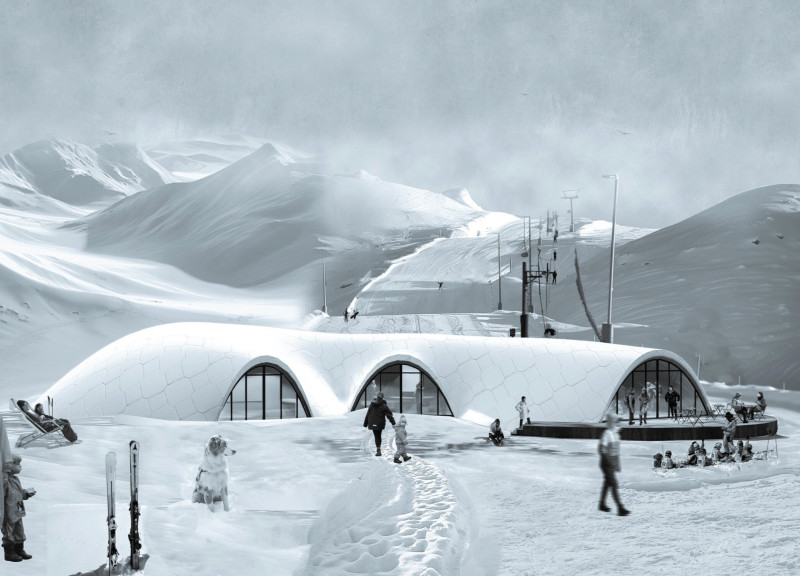5 key facts about this project
The design encapsulates a clear vision that seeks to bridge the gap between built forms and natural landscapes. By utilizing a palette of locally sourced materials, the architecture establishes a strong connection to its surroundings, further underscoring its relevance within the specific geographical framework. The façade showcases a combination of sustainable timber and low-emissivity glass, which contribute to both the structural integrity and energy efficiency of the building. This choice of materials reflects a commitment to reducing the project’s carbon footprint while providing a warm and inviting appearance.
Within the layout, the architectural design prioritizes an open, flowing spatial arrangement that promotes a sense of connectivity and collaboration. The key public areas are strategically positioned to facilitate gatherings and social interaction, making the space both functional and welcoming. The thoughtful orientation of windows and outdoor spaces ensures the optimal influx of natural light, creating a pleasant interior environment that encourages productivity and well-being amongst its occupants.
One of the standout features of this project is the integration of green infrastructure. Roof gardens and vertical planting systems are incorporated to enhance biodiversity and promote ecosystem services. Such design choices not only improve the building's aesthetic appeal but also contribute to urban ecological health by providing habitats for local wildlife and improving air quality. The inclusion of rainwater harvesting systems demonstrates an understanding of the importance of resource management, allowing for a reduction in water usage and promoting self-sufficiency within the architectural framework.
The attention to detail is evident in every aspect of the design. From the exposed structural elements that celebrate craftsmanship to the carefully selected color palette that echoes the natural hues of the surrounding environment, each choice informs the overarching narrative of the project. This approach is further emphasized through the use of textures that invite tactile engagement, making the architecture not just visually appealing but also sensorily engaging.
Unique design strategies are evident in how the architecture engages with its environment. The programmatic layout responds to the seasonal changes and local climate, ensuring thermal comfort year-round while minimizing reliance on mechanical heating and cooling systems. The thoughtful integration of shading devices on the exterior moderates solar heat gain, creating a more sustainable building that operates harmoniously with its climatic conditions.
Moreover, the project encapsulates a commitment to innovation as it embraces smart building technologies. These systems enhance operational efficiency and provide users with valuable insights into their energy consumption patterns, fostering a culture of sustainability and responsible stewardship among its inhabitants. This forward-thinking approach reflects a deeper understanding of modern living and the importance of adaptability in architectural design.
In reviewing the architectural plans, sections, and designs, one can gain a clearer understanding of how these elements come together to produce a cohesive and functional space. The architectural ideas presented are worth exploring further as they illuminate the strategic thinking that informs each decision made throughout the design process. For a more comprehensive insight into this project, the presentation of architectural sketches and detailed design concepts is available, offering a deeper dive into the inspirational journey behind the architecture. This project stands as a testament to the potential of thoughtful design in promoting both aesthetic pleasure and functional excellence within the built environment.


























